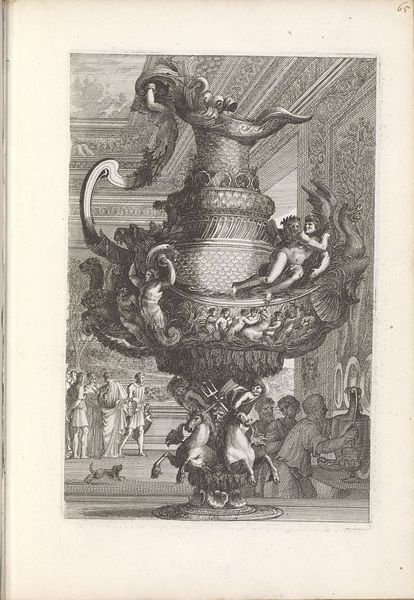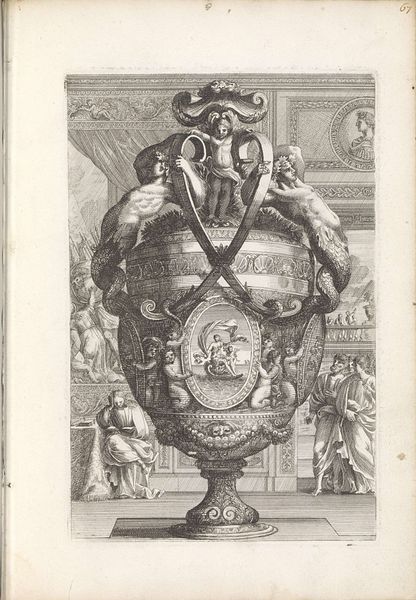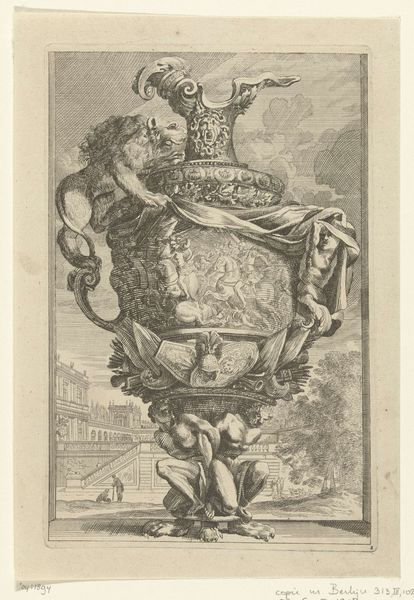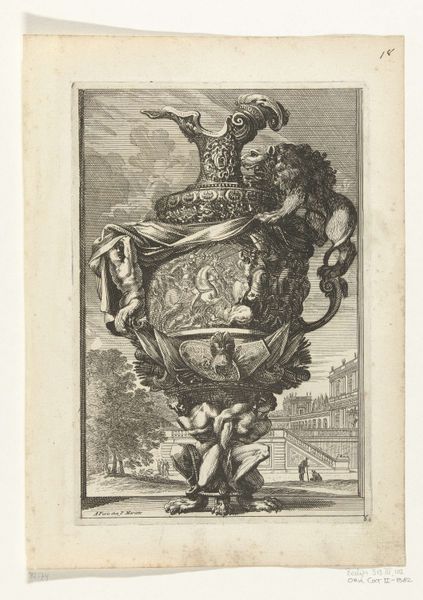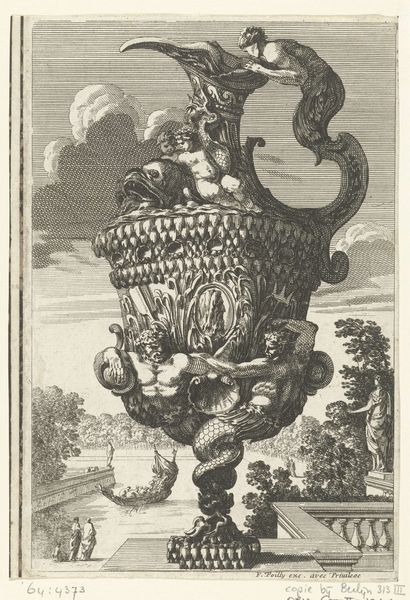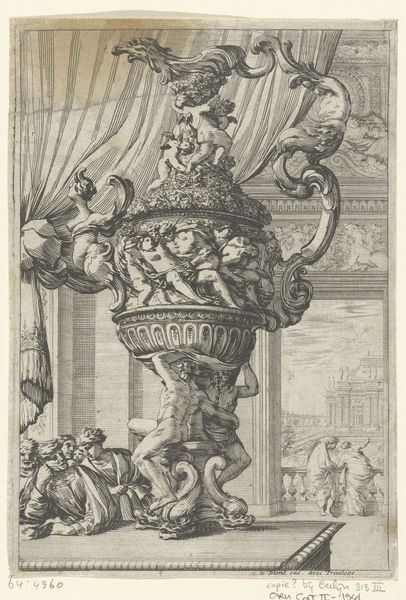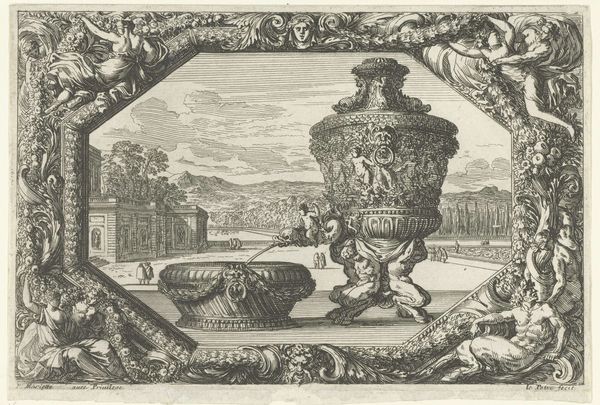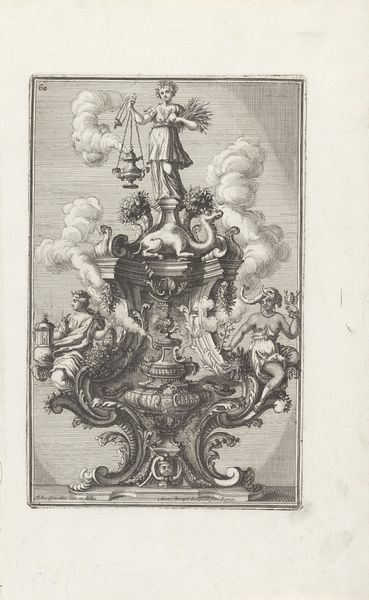
Schenkkan met een voet in de vorm van een man op een draak 1659 - 1678
0:00
0:00
franzertinger
Rijksmuseum
print, engraving
#
allegory
#
baroque
# print
#
old engraving style
#
figuration
#
history-painting
#
engraving
Dimensions: height 218 mm, width 144 mm
Copyright: Rijks Museum: Open Domain
Editor: This engraving from the late 17th century by Franz Ertinger, titled "Schenkkan met een voet in de vorm van een man op een draak," depicts an incredibly ornate pitcher supported by a man riding a dragon. The scene has such a theatrical quality. How do you interpret this work, especially considering its historical context? Curator: This piece screams Baroque excess, doesn't it? But beyond the visual spectacle, consider the power dynamics at play. You have this enslaved figure – is he Atlas? – crushed under the weight of luxury, literally supporting the trappings of wealth. And that dragon? It represents a conquered, subjugated force. Editor: That's a really powerful reading. I was mainly focused on the aesthetic elements, but now I see it. Is that wealth for everyone though, or is this a very pointed critique of those who benefitted? Curator: Precisely! Baroque art often functioned as propaganda, legitimizing the ruling class. But a closer look reveals potential cracks in that facade. Is Ertinger subtly commenting on the social injustices inherent in such opulence? Who benefits from this excess, and at what cost? The faces in the medallions and lining the space around seem like very important clues to answering that. Editor: I hadn't thought about it that way at all. The composition seems to highlight this tension, making the viewer complicit in the spectacle. I see now how the very act of depicting such extravagance becomes a form of commentary. Curator: Exactly. It invites us to question the values of the time, and, by extension, our own. This is intersectionality at its finest -- wealth, race, class, all intersecting to construct history. It reveals art as an active participant in shaping, justifying, and sometimes, subverting societal norms. Editor: This has completely changed my understanding of the engraving! Thank you! I can see it not as a celebration of wealth, but as a critical reflection of the structures that sustain it. Curator: And that's the beauty of art, isn't it? It can be both a reflection and a critique, forcing us to confront uncomfortable truths about ourselves and our world.
Comments
No comments
Be the first to comment and join the conversation on the ultimate creative platform.
